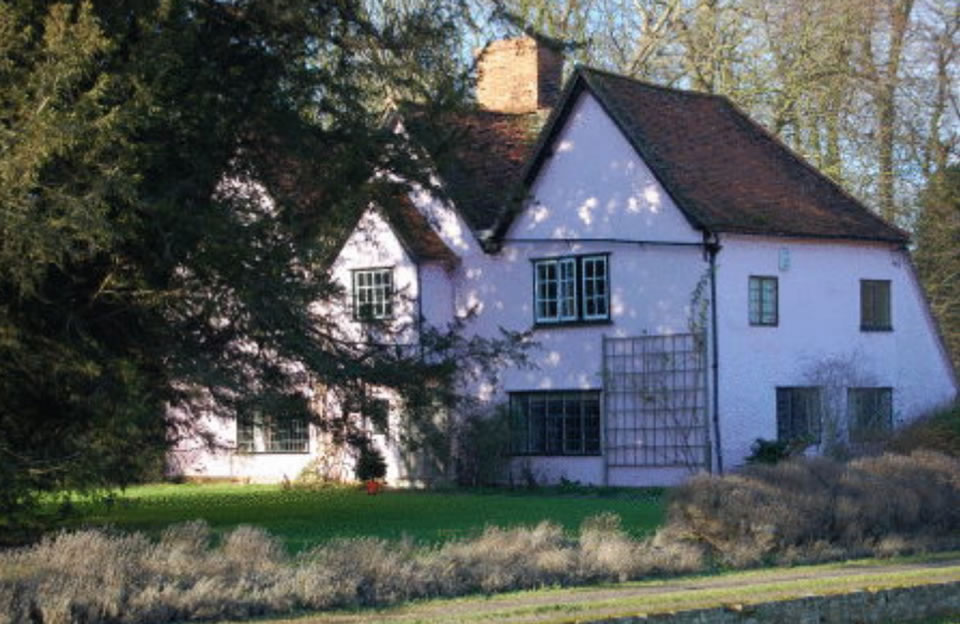Uttlesford’s Heritage Context
Uttlesford’s Heritage Context
The district contains three historically important towns – Saffron Walden, Thaxted and Great Dunmow – but one of the main characteristics is the predominance of scattered villages. Many examples of these have a relatively isolated church and manor house with other houses sometimes centred on a crossroads or other features (e.g. ‘greens’) around which the modern village has developed.
More focussed ‘traditional’ village forms are also found with the church and houses clustered around a green which often developed in the C12 and C13. The term ‘End’ is used to denote the subdivision of parishes. Historic roads and green lanes throughout the district are twisting and often partially sunken, and mostly date to the medieval period.
The first definite settlements in the area date to the Middle to Late Bronze Age with evidence found at Stansted, but it is during the Iron Age that remains of buildings become more prolific. Evidence of hill forts at Audley End are protected as scheduled monuments together with defended enclosures at Little Hallingbury (Wallbury). Roman Uttlesford is preserved in strategic forts such as at Great Chesterford (the second largest walled Roman town in Essex) and in towns such as Great Dunmow.
Much of the present settlement pattern however originates from the middle ages with evidence of later Anglo-Saxon settlement and a cemetery excavated at Wicken Bonhunt. Saxon settlements include those that were founded as ‘burhs’ by Edward the Elder such as Newport (although this did not grow into a town until after the Norman Conquest) and those that have monastic foundations, e.g. Hatfield Broad Oak, Saffron Walden and Berden.
Standing buildings surviving from this time period are rare and limited largely to monastic, abbey and priory churches, but early medieval occupation is also evidenced by a number of motte and bailey castles. Fine examples are found at Saffron Walden and Stansted Mountfitchet, with smaller examples at Great Canfield and Great Easton; these are all protected as scheduled monuments.
Timber-framed buildings, commonly plastered, are the secular building type most typically associated with Uttlesford and indeed Essex. They reflect the wealth and relatively dense population of the area in the later Middle Ages. This was due to the physical features of the district including good agricultural land and its relative proximity to London and its markets.
Medieval rural settlement in the district was however dispersed in nature with church/hall complexes, isolated farms, moated sites and small hamlets strung out along linear greens. Uttlesford has one of the largest numbers of moats in Essex with many originating from the C12 and C13. These were generally the site of manor houses and/or larger farms and the oldest known timber-framed buildings are aisled halls and barns, usually associated with manors, such as Clavering Bury. An example of a late medieval manor on a moated site also survives at Colville Hall, White Roding.
In the towns and villages, properties were originally built as hall houses, standing parallel to the street and occupying wide frontages. Pressure for development in the C14 and C15 in towns and villages resulted in these wide plot frontages being subdivided and new building forms developed in reaction to this. This led to the variety that is seen today, including: gable ended buildings with a shop to the front; smaller houses in terraced rows; double-pile plan forms; or, buildings over three storeys.
A common medieval feature of town and village centres in the district is the gabled cross wing, e.g. Great Chesterford and Radwinter. Shops from this period are also recognisable from their wide arched headed windows adjacent to doors and large numbers survive in Saffron Walden, but also in Thaxted and Felsted for example.
From the C17 onwards, timber-framed buildings were plastered and pargetting derives from this period and is very characteristic of the district. Brick had started to become widespread in buildings of higher status from about the middle of the C15, but remained confined to the plinth wall and chimneys in most dwellings until the end of the C17 and into the C18. From this point on, many properties were refronted in brick, but far fewer were built new, exceptions being the grander ‘urban’ or ‘town’ type properties such as Clarence House at Thaxted.
The arrival of the railways in the mid-C19 changed the landscape forever, opening up the ready availability of a wider range of affordable building materials and influencing the location of development. National architectural styles and the influence of architects from beyond the region resulted in buildings with a more urban character. The later C19 also saw the development of public buildings as a distinct building type. The development of new materials and building technologies in the C20 has also impacted the built environment as traditional constraints to scale and building form have disappeared.
Page updated: 20/07/2023



